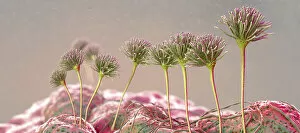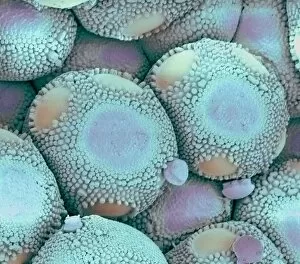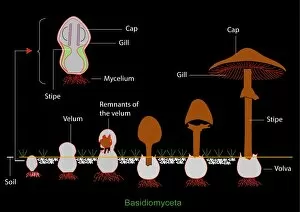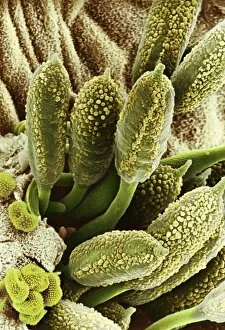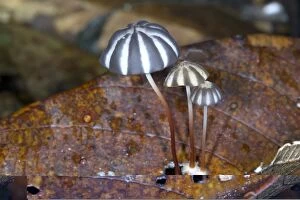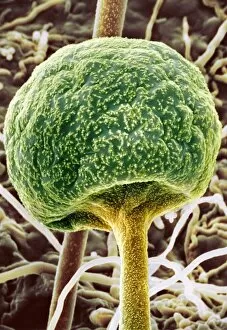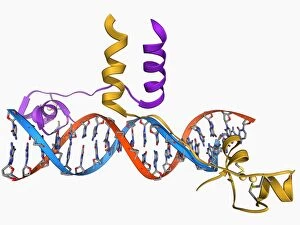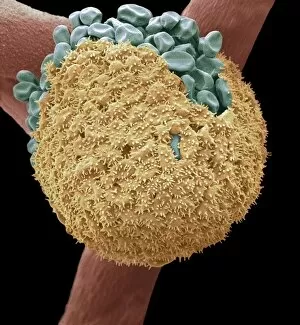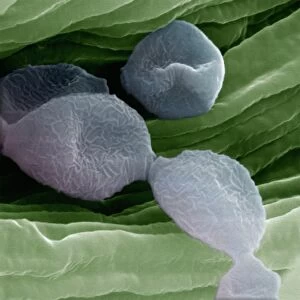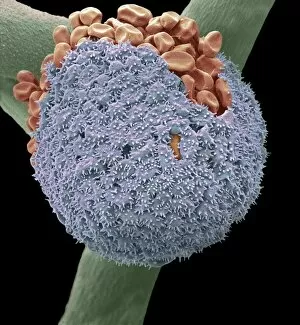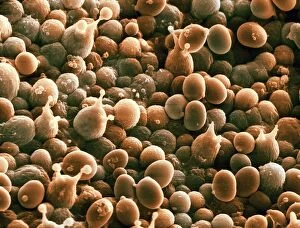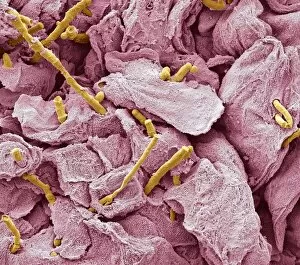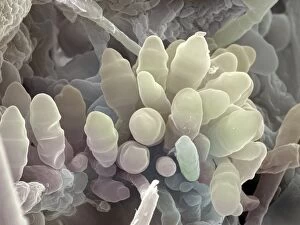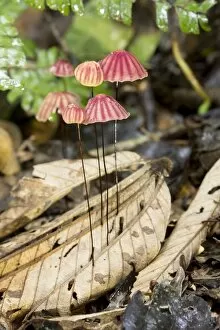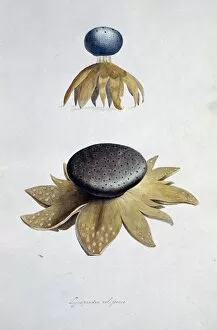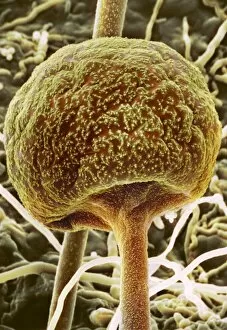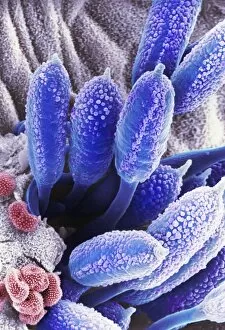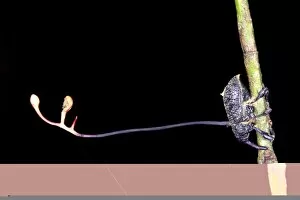"Mycological Marvels: Exploring the Fascinating World of Fungi" Step into a realm where bread mould becomes a captivating subject under the scanning electron microscope (SEM). Witness the intricate details and mesmerizing patterns that adorn these seemingly ordinary fungi. Transport yourself to the early 1900s, as you gaze upon a botanical plate depicting both Good and Bad Mushrooms. Delight in the vibrant colors captured through lithography, showcasing nature's diversity in mushroom species. Discover Hyprophyllum aquifolii, elegantly displayed on Plate 38 from Iconographie des Champignons de J. J. , its delicate form beckoning you closer. Admire Hypodendrums fagi and queris on Plate 138, their unique features highlighted with precision by J. J. 's artistic hand. Marvel at Hypophyllum campestre or the field mushroom on Plate 130 from 'Iconographie des Champignons de J. J. , ' an exquisite representation of this culinary delight found in meadows. Let your imagination run wild as you envision Tubiporus cepa on Plate 176, enticingly illustrated for Traite des Champignons', promising a feast for those who dare to indulge. Delve deeper into Tubiporus esculentus on Plate 168 from Iconographie des Champignons de J. J. , marveling at its edible allure and contemplating its potential uses in gastronomy. Witness fungal fruiting bodies come alive before your eyes through stunning illustrations that capture their beauty and complexity. Explore another Botanical plate depicting Good and Bad Mushrooms from c. 1900 - a testament to mankind's fascination with these enigmatic organisms throughout history. Uncover Rust fungus infection through SEM imagery, revealing both the destructive power and awe-inspiring intricacy of nature's battles within microscopic realms. And finally, ponder upon a mouldy lemon.




